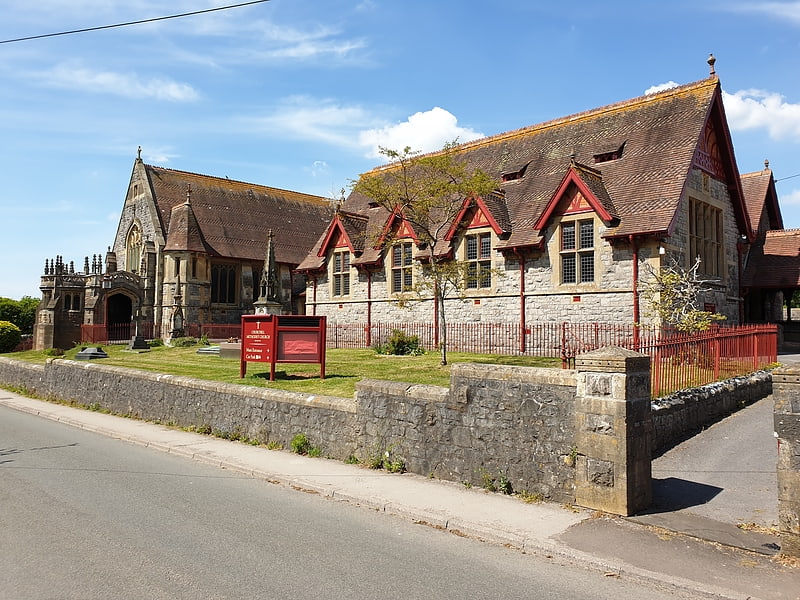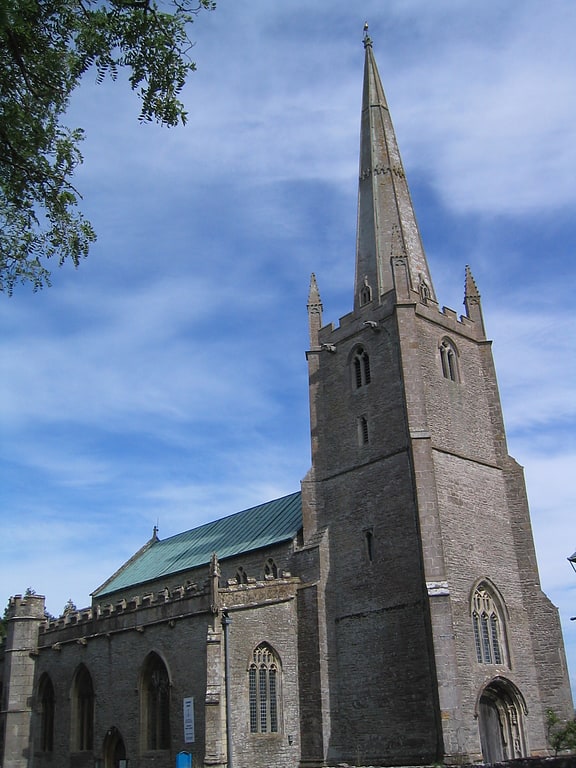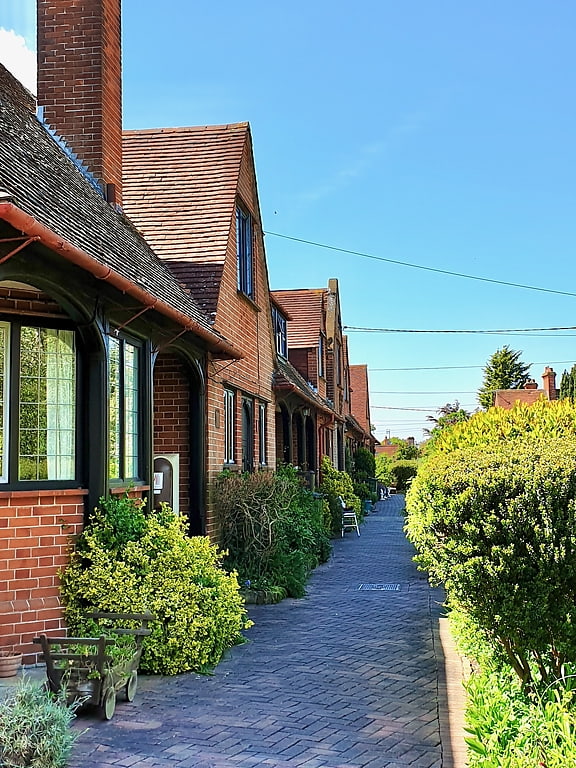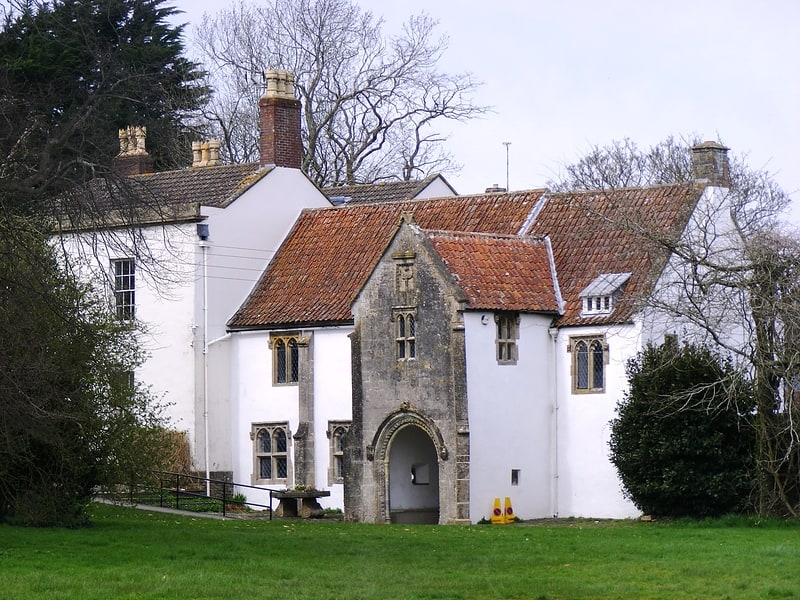Discover 5 hidden attractions, cool sights, and unusual things to do in Congresbury (United Kingdom). Don't miss out on these must-see attractions: Cadbury Hill, Churchill Methodist Church, and St Andrew's Church. Also, be sure to include Sidney Hill Cottage Homes in your itinerary.
Below, you can find the list of the most amazing places you should visit in Congresbury (England).
Table of Contents
Cadbury Hill

Hill in England. Cadbury Hill is a small hill, mostly in the civil parish of Congresbury, overlooking the village of Yatton in North Somerset. On its summit stands an Iron Age hill fort, which is a Scheduled Ancient Monument.[1]
Churchill Methodist Church

Churchill Methodist Church, in the village of Churchill, North Somerset, is a Grade II listed Methodist church on the Somerset Mendip Methodist Circuit. Designed by Foster & Wood, Bristol, of Perpendicular Gothic style, the church opened on 2 May 1881. The schoolroom and coach house, of Elizabethan architecture, were erected before the new church, and opened on 1 June 1879. Sidney Hill, a wealthy local businessman and benefactor, erected the church and schoolroom as a memorial to his wife.
The Reverend Meg Slingo is the incumbent minister for Churchill. The Anglican and Methodist churches work together in many areas, particularly activities that involve children and initiatives in the parish schools. The schoolroom is now used as a hall and is run by a charity. The hall has a newly refitted kitchen and smaller rooms making it useful for community activities.[2]
St Andrew's Church

Church in Congresbury, England. The Anglican Church of St Andrew in Congresbury, Somerset, England dates from the 13th century and has been designated as a Grade I listed building.
Congresbury is named after St Congar, who is said to have performed three miracles in the area. The second part of the name is thought to come from burh meaning fortified place. The archaeologist Mick Aston identified an Anglo-Saxon sculpture of St Congar which is believed to have come from St Andrews Church, and which is now in the Museum of Somerset in Taunton.
The present church was consecrated by Bishop Jocelin of Wells on 11 July 1215.
The church was remodelled in the 15th century, in a Perpendicular style; further restorations followed in 1825, 1856 and 1950–2. The nave includes pillars with decorated stone corbels supporting the wooden roof timbers and carved bosses. The organ, which was rebuilt in 1967 is in the chancel. The Merle chapel was formerly known as the Chapel of St Congar. The font is Norman. The tower is surmounted by a spire which rises to 120 feet (37 m).
The Tower contains a heavy ring of 8 Bells, the Tenor (the biggest bell) weighing 3812 lb or 1729 kg and it strikes the note of C. The oldest bells date back to 1606 and were cast by George Purdue.
The parish is part of the benefice of Congresbury with Puxton and Hewish St Ann within the deanery of Locking.[3]
Sidney Hill Cottage Homes

Sidney Hill Cottage Homes, whose official name is Sidney Hill Churchill Wesleyan Cottage Homes, is a Grade II listed estate of Wesleyan cottage homes in the village of Churchill in North Somerset. It was opened in December 1907 to provide furnished accommodation for people in need. Designed in an Arts and Crafts Vernacular style by Thomas Ball Silcock and Samuel Sebastian Reay FRIBA of Silcock and Reay, architects at Bath and London, twelve cottages were constructed on three sides of a quadrangle, with landscaped gardens. The third, or south side, is enclosed by a low terrace wall with wrought iron gates. A large stone sundial, with a spreading base, is set in the centre of the quadrangle. In their original form, each house had a living room, with a small scullery, larder, coal house, and one bedroom with a large storeroom.
Sidney Hill, a wealthy local businessman and benefactor, paid for the construction costs and endowed a fund to maintain the homes. Sidney Hill Churchill Wesleyan Cottage Homes, a registered charitable trust and a member of the National Association of Almshouses, continues to manage the homes and provide accommodation for local people in need. The trust also funds the maintenance of the communal garden and operates the heating system which services the houses.[4]
The Vicarage

Building in Congresbury, England. The Vicarage in Congresbury, Somerset, England, includes an early 19th-century vicarage and former Priests House from around 1446. It has been designated as a Grade I listed building.
The eastern range comprising the Refectory was built by executors of Bishop Thomas Beckington of Wells whose heraldic devices and those of the Poulteney family are on the porch. There are also carved faces on the window surrounds. The specific year of construction is not known but thought to be between 1440 and 1470, although the porch which may be slightly later than other parts of the building has been dated to 1465.
In 1823 the refectory was found to be in a bad state of repair and moneys allocated for the construction of the new vicarage. Major repairs were carried out to the refectory in the 1950s following the discovery of deathwatch beetle.
The two-storey limewashed stone of the vicarage has a tiled hipped roof and Greek Doric distyle porch. The refectory is supported by buttresses and pantile roofs. The hall and rooms above have original fireplaces and ceilings.
The building is now used for church and community functions. In 2016 plans were published for the development of 26 homes on the land belonging to the church. As part of the proposal the vicarage would become a common house providing a communal kitchen and dining room and office space.[5]